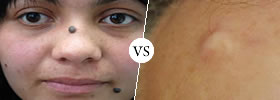Difference between Rubber Wood and Hardwood
Key difference: Wood is mainly classified into two categories: hardwood and softwood. Hardwood is the wood that comes from an angiosperm tree. This is a type of tree that has seeds that are enclosed, be it in pods, a shell, a covering or in fruit. Rubberwood is essentially the wood that comes from the rubber tree, the Pará rubber tree to be specific. It is a type of hardwood.
.jpg) Wood is mainly classified into two categories: hardwood and softwood. Many people consider that hardwood is named such because it is harder and denser than softwood. This is true often enough, but not all the time. Take for example the balsa wood, which is soft, light and less dense than most other woods, but is classified as a hardwood. The classification of the wood is not actually done on the basis of weight or density; rather it is done on the basis of plant reproduction. (Also see Teakwood Vs. Rubber Wood).
Wood is mainly classified into two categories: hardwood and softwood. Many people consider that hardwood is named such because it is harder and denser than softwood. This is true often enough, but not all the time. Take for example the balsa wood, which is soft, light and less dense than most other woods, but is classified as a hardwood. The classification of the wood is not actually done on the basis of weight or density; rather it is done on the basis of plant reproduction. (Also see Teakwood Vs. Rubber Wood).
Basically, hardwood is the wood that comes from an angiosperm tree. This is a type of tree that has seeds that are enclosed, be it in pods, a shell, a covering or in fruit. For example, apples or nuts and seeds like acorns and walnuts. These types of seeds allow birds and insects to be attracted to the flowers of the tree and be able to carry the pollen to other trees. This is also the reason why hardwood trees are not often bunched together but are spaced apart and often have other trees in-between them.
Most hardwood trees are also deciduous is nature. A deciduous tree is a tree that loses its leaves annually. Hardwood trees are also slower to grow, taking their own time. Due to this, most hardwood is dense. This is also the reason that hardwood is expensive, as it takes longer to grow. Some famous hardwoods include maple, balsa, oak, elm, mahogany, and sycamore. (Also see Teak Vs. Oakwood)
Hardwoods are used for various applications such as fuel, tools, construction, boat building, musical instruments, flooring, cooking, barrels, manufacture of charcoal, etc. However, most people relate hardwoods for use in home furnishing and furniture. The most commonly used hardwoods for furniture include oak, ash, acacia, mango, and mahogany.
Furniture made with hardwood tends to be long-lasting and durable. Due to this hardwoods are generally accepted as being the highest quality wood. However, with the high density of most hardwoods, they have a tendency of splitting, due to which the carpenter has to take extra care while making a piece of furniture. Despite this, some hardwoods are preferred for a particular use. For example, maple and elm are often used for flooring, while balsa is preferred for models and lightweight wood projects as it is easy to work with.

Rubberwood is essentially the wood that comes from the rubber tree, the Pará rubber tree to be specific. The Pará rubber tree is scientifically known as Hevea brasiliensis. As the wood of a rubber tree, one would expect it to be soft and springy like, well, rubber. However, rubberwood is essentially a hardwood. This means that the Pará rubber tree is an angiosperm. (See: Timber Vs. Lumber)
The Pará rubber tree is essentially grown in plantations for the latex it produces, which is then harvested and used in the production of commercial rubber. However, after 25 – 30 years, the production of latex in the tree becomes very low; hence the tree is often cut down and replaced with another, which would be more financially viable.
Previously, the felled rubber tree would be burned, as there would be no further use for it. However, in lieu of growing environmentalism, the wood from the felled rubber tree is now recycled and used in various applications. The most common applications of the rubberwood include furniture, toys, and kitchen accessories. Like all hardwoods, rubberwood comes in varying degrees of quality.
The advantage of rubberwood is that it is a dense grain that is easily controlled in the kiln drying process. This makes is easily manageable in the kitchen. However, rubberwood is not suitable for outdoor usage. Furthermore, rubberwood is touted over other types of wood because as it is essentially a recycled wood, it is more eco-friendly. (See Pinewood Vs. Plywood)
Image Courtesy: austellforest.com, europack.co.in









Add new comment